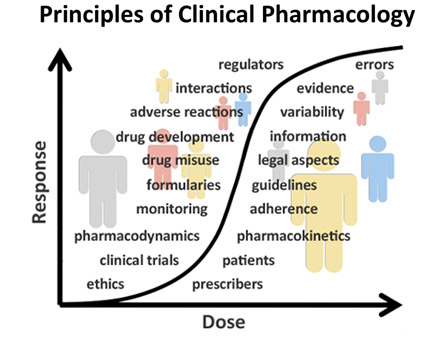Session Key Points
- The concentration of a drug in plasma falls after dosing as it is distributed, and eliminated by metabolism and excretion.
- Most drugs are eliminated by first-order processes, during which a constant fraction of the amount of drug remaining in the body is eliminated in a given time and the time for a dose to be completely eliminated is independent of dose size.
- All metabolic processes are saturable, but for most drugs, saturation does not occur after doses within the therapeutic range. However, for some drugs, saturation of the metabolising enzymes at therapeutic dosage leads to zero-order kinetics, during which a constant amount of drug is eliminated in a given time and plasma concentration falls very slowly.
- Clearance is the volume of blood from which drug molecules are completely eliminated in a given time. Plasma drug clearance is a proportionality constant that relates the plasma drug concentration to the rate of drug elimination. Total plasma clearance is the sum of clearance by all organs of elimination
- For drugs eliminated by first-order processes, half-life determines the time taken for elimination to be complete. It is dependent on both apparent volume of distribution and clearance.
- Bioavailability is the fraction of a dose that enters the systemic circulation unchanged after absorption and (after an oral dose) first-pass metabolism. It is an important determinant of oral dosage recommendations for drugs.

